Martin 3,000,000th Guitar, D-300, CEO-11 and Other NAMM Stunners
|
|
One man who's got something to say about…
|
|
CS SD specs include: New SD-14 Fret body size; all-solid tonewood construction, choose between high flame koa or Guatemalan rosewood back and sides, Vintage Tone System Sitka spruce top with tri-color wood fiber herringbone purfling; forward 5/6″ scalloped Sitka spruce bracing; Genuine mahogany neck with a traditional full dovetail neck joint, Modified Low Oval profile; ebony fingerboard with High Performance taper, 1-3/4″ width at nut, 2-1/8″ at the 12th fret, long pattern Diamonds & Squares fret position markers; ebony belly bridge with short saddle and 2-5/32″ string spacing; abalone script headstock logo; nickel Grover tuning machines; natural nitrocellulose high gloss body finish and satin neck finish.
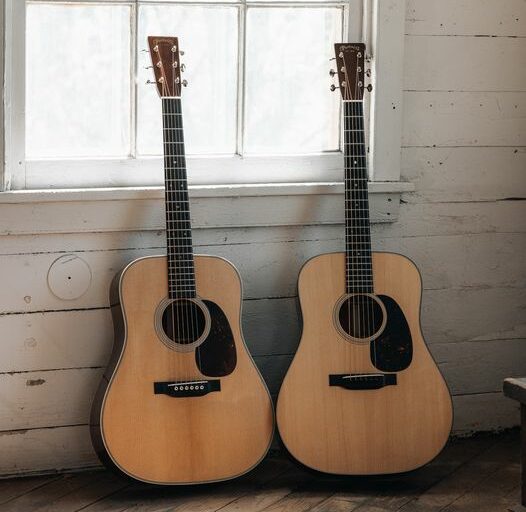
My tongue hurts from countless times I had to ignore or deflect queries asking if we would ever see Martin adding new models to the Authentic Series. Martin removed many Authentics from the catalog without any to replace them, until now. At long last, we have two new Authentic Series models released to the public – the revised D-28 Authentic 1937 and the long-desired companion, the D-18 Authentic 1937.
These new Authentics are but two of many new models that Martin Guitars will be debuting later this week at Hall D, Booth 5602, at the NAMM show in Anaheim, California. They saw fit to put out a press release today mentioning a few of these instruments. But the real news is found in the latest editions to the fabulous Authentic Series.
Each of these new Authentics is made with a new dreadnought body shape. Or rather, I should say an old body shape. The silhouette of each model is quite close to the shape of an actual 1937 D-28 and D-18. This should satisfy critics of the Authentic Series that have claimed it was inaccurate to refer to Authentic Series models as vintage Martin recreations if they are made with the modern-day Martin body shapes.
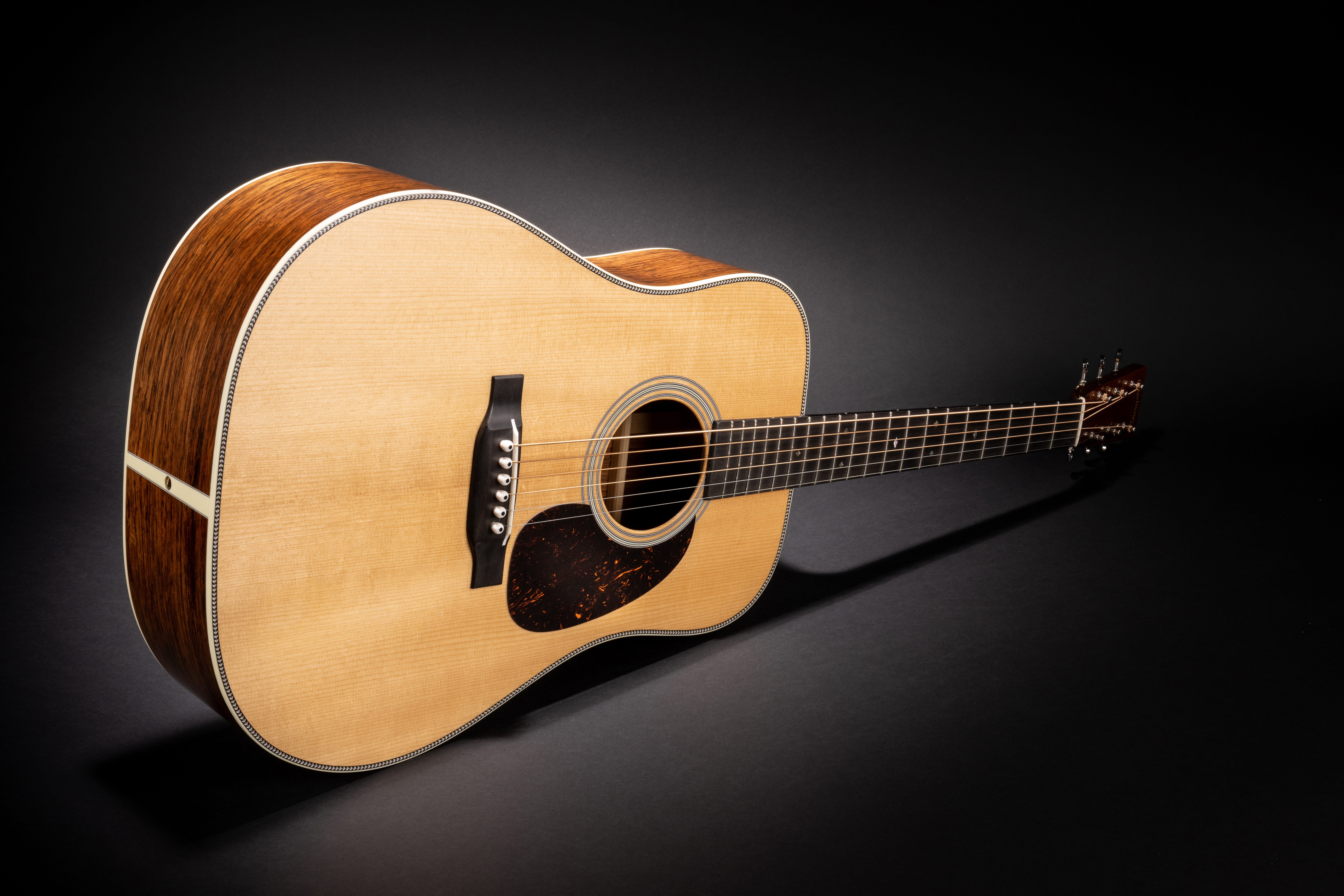
The instrument often cited as the best sounding acoustic guitar ever made is a particular Martin D-28 from 1937. It was taken to the Smithsonian Institute in 2013 for magnetic resonance imaging and X-rays to reveal as much as possible about the inner workings of that “Stradivarius of guitars” so that Martin could recreate the bracing and bridge plate down to the smallest detail. The resulting D-28 Authentic 1937 has gone through some changes since it debuted at Winter NAMM in 2014.
Until now, the most significant improvements were the addition of Martins exclusive Vintage Tone System and the Vintage Gloss version of the traditional nitrocellulose finish. Today, I am finally allowed to tell you about two new significant changes, the revised body shape and the tonewood used for the back and sides – Guatemalan rosewood.
Although the differences are subtle between last year’s D-28 Authentic 1937 and the one appearing at NAMM 2022, the silhouette of the soundboard and back, which determine the exact shaping of the sides, and therefore the specific shape of the sound chamber, are truly different. This is a tracing Tim Teel, Martin’s Head of Instrument Design, created to show the differences between a dreadnought made in the 1930s and one found in the Standard Series today.
(click to enlarge.)
How much this might affect tone production will be debated for at least as long as how much difference it makes to the tone of actual pre-war D-28s compared to modern guitars. But one thing that will certainly affect tone production of this new D-28A 1937 is the replacement of Madagascar rosewood for Guatemalan rosewood.
Both rosewoods have been equated with the Brazilian rosewood used on actual 1930 Martins. To my ear, Madagascar rosewood sounds more like the brightest, least-warm Brazilian rosewood Martins, chimey, expressive and colorful, with a quick reflection of soundwaves. Guatemalan rosewood sounds typically warmer and throatier, with a darker undertone more like Cocobolo and East Indian rosewood, but with quicker reflection than either of them. It also offers the endless depth to the bottom end that is very much like the bassier example of Brazilian rosewood Martins, complimented by high-end overtones with a colorful richness likewise similar to that holy grail of endangered species that once grew in the costal lowlands of Brazil.
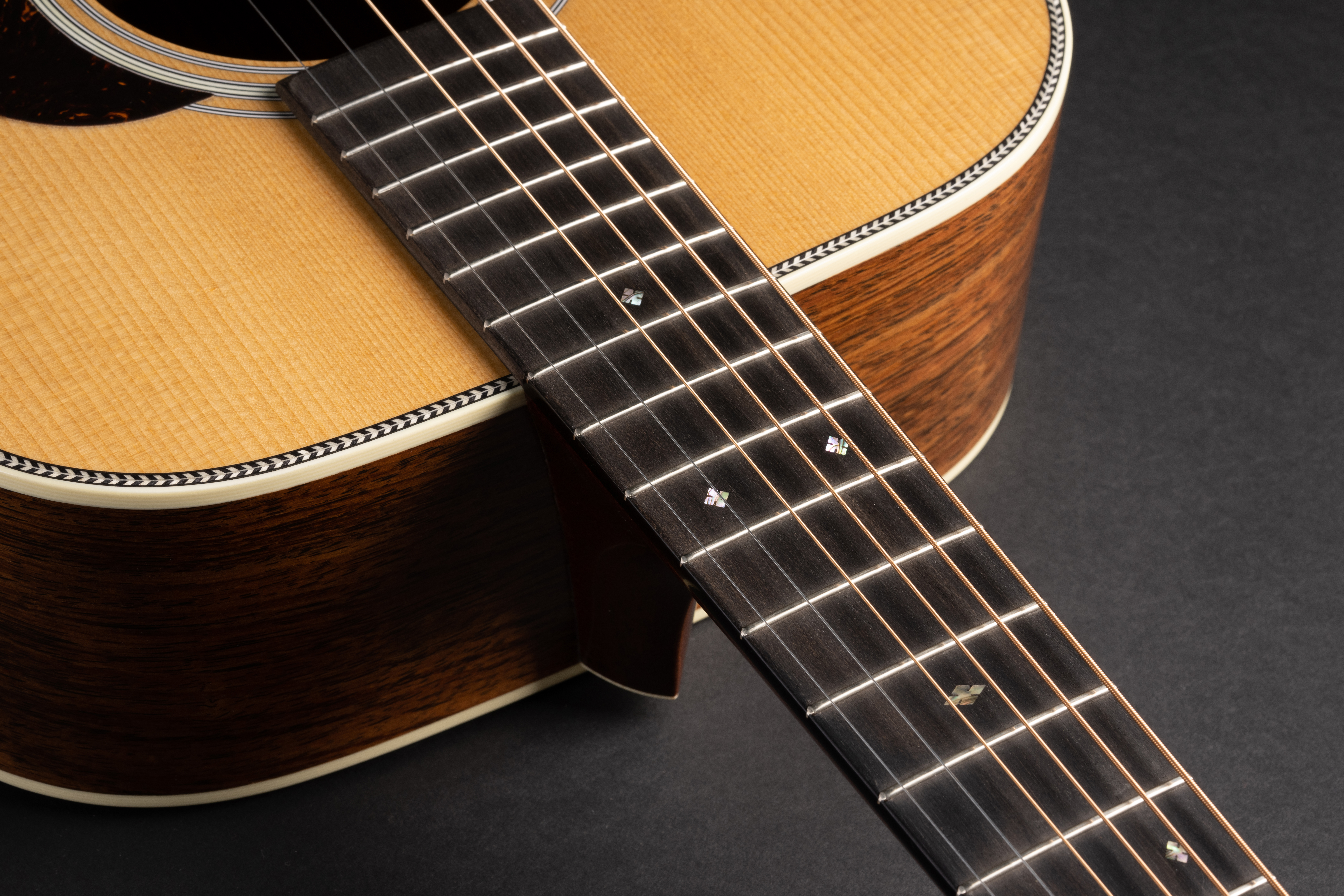
Martin’s supply of Madagascar rosewood is dwindling, and they will not be getting more any time soon. Retired CEO Chris Martin is passionate about environmental stewardship He has spent decades educating and assisting nations of the world in the responsible management of-their precious natural resources. When the legal government of Madagascar was overthrown in a coup d’état in 2009, by a faction intent on exploiting the rare resources of that tropical island for short-term gain, Martin Guitars was the first American manufacturer to cease the acquisition of Madagascar rosewood. When I first got wind of Chris Martin investigating the inevitable replacement of Madagascar rosewood in the Authentic Series, Guatemalan rosewood was the first thing out of my mouth. It is the most logical choice. I believe future owners of this new D-28A 1937 will be most pleased with the rich and powerful tone these battleships throw out.
D-28 Authentic 1937 (2022) Spec Sheet Here
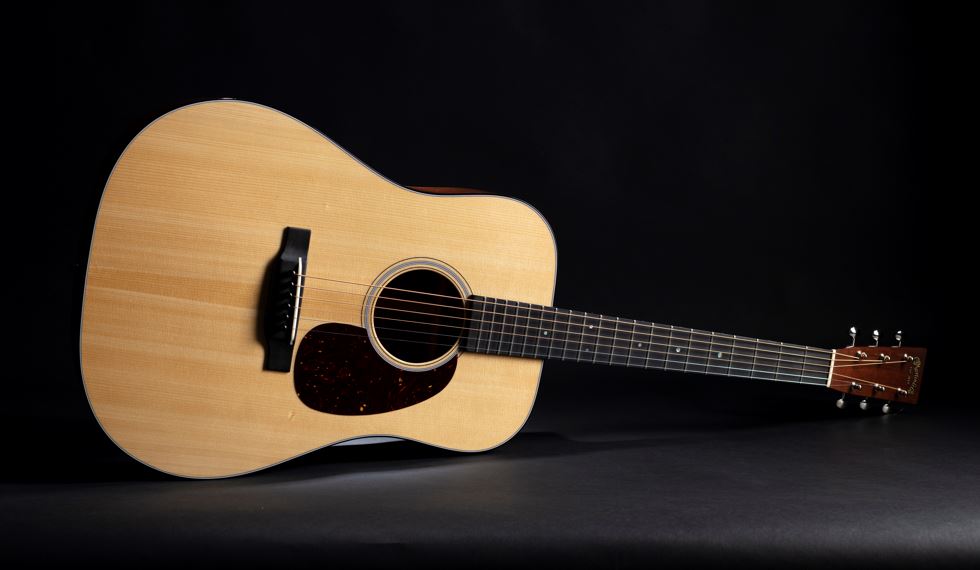
Hooray for C. F. Martin & Co. for making dreams come true! Countless people have been wishing they would release an Authentic Series D-18 with 1937 specs, as good as if not better the original D-18 Authentic 1937 created in small batches from 2006 until the advent of the Modern Authentic Series. At long last, the wish is granted with the debut of the 2022 D-18 Authentic 1937.
Like the revised D-28 Authentic 1937, this latest Authentic model has the new body shape, notably closer to Martin dreadnoughts made before the Second World War. Unlike the current D-18 Authentic 1939 and D-18 Authentic 1939 Aged, this new 18 has forward-shifted bracing rather than rearward-shifted bracing. This physical shifting brings about a tonal shift with a fuller, rounder bass and increased natural reverb.
It also has a 1-3/4” V neck with shaping like the D-28 Authentic 1937. But it is unique, having been copied from a 1937 D-18 once owned by James Taylor. Originally, it was reported this guitar was based on the old D-18As made in 2005, which were not based on a specific prewar Martin, but rather the original four-person team took their inspiration from multiple vintage Martins. But it is indeed the faithful reproduction of a specific 1937 D-18, with a little extra star power thanks to JT.
NAMM is finally upon us (in three days’ time.) C. F. Martin & Co. has seen fit to release the identities of some of the many new models that will be debuting later this week at Hall D, Booth 5602, at the NAMM show in Anaheim, California.
The new guitars I can mention today are the D-18 Authentic 1937, D-28 Authentic 1937, 000-16 StreetMaster®, and the GPC-13E Burst. There are also three new ukuleles, the 0 Tenor Uke, C1 Uke, T1 Uke FSC. You can read more about the two Authentic Series models HERE.
The more-affordable options offer plenty of excitement in their own right. They are as follows.
(click to enlarge photos)
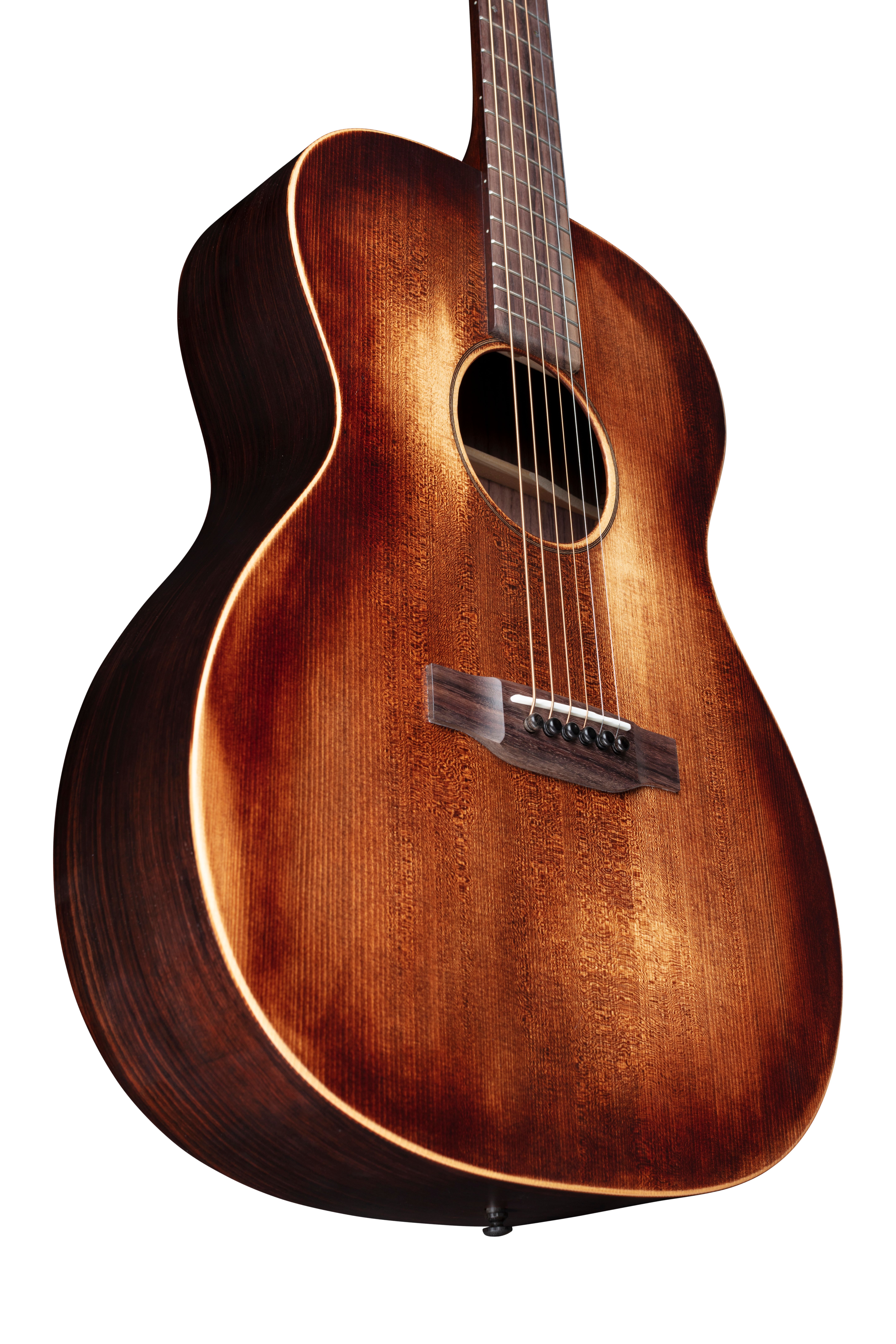
Not only does this new 000-16 get the StreetMaster finish hereto before seen on the all-mahogany 15 Series instruments, it is the first 16 Series instrument made with an Adirondack spruce soundboard. Not only that, it is first instrument made in the 16 Series to feature Martin’s Vintage Tone System, their propriety torrefaction treatment. The back and sides are solid East Indian rosewood! Rosewood/VTS Adi, short-scale 000 with the StreetMaster finish for a very reasonable price that’s very nice. List price: $1,999, including a softshell case.
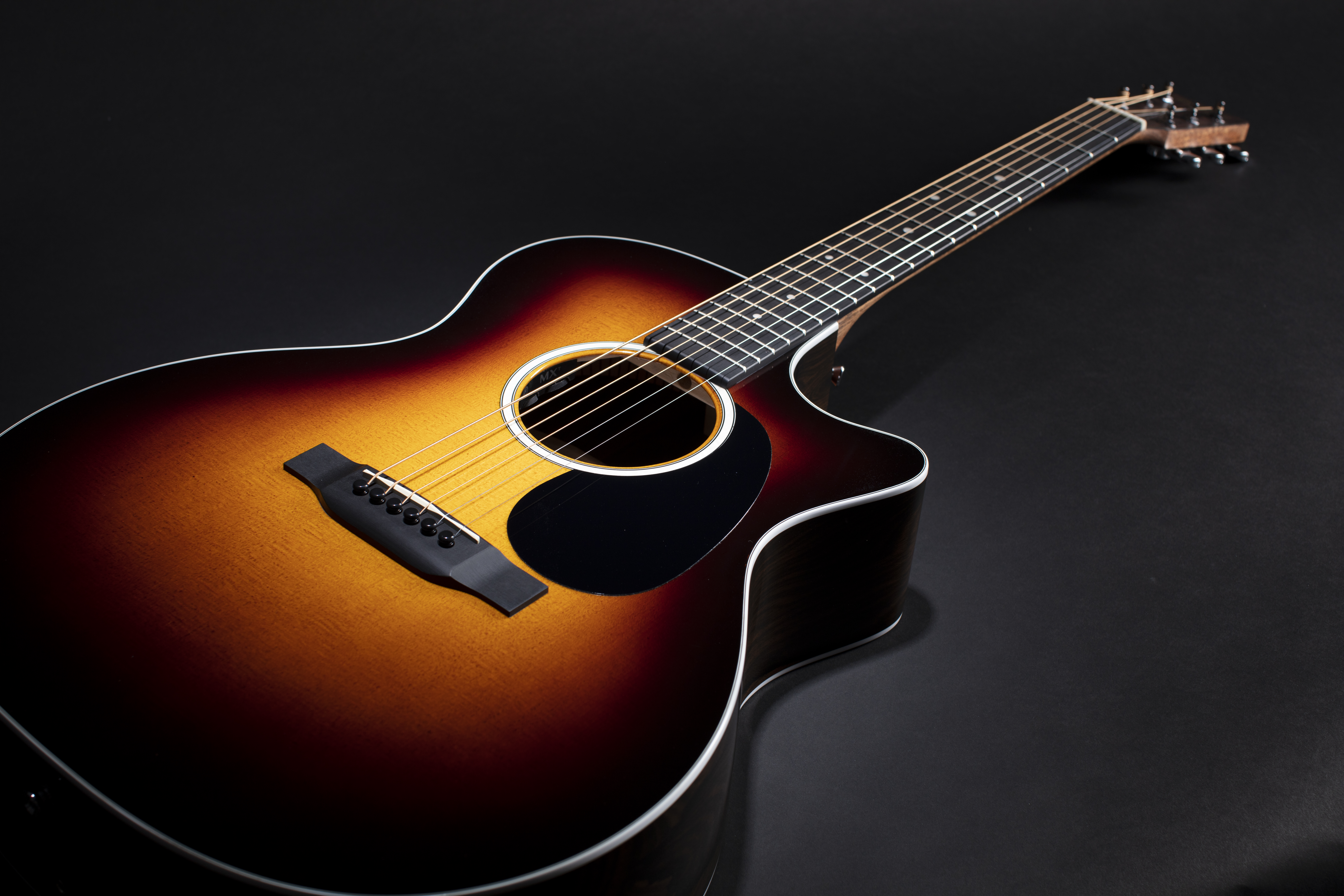 The latest instrument made with Style 13 appointments at the top of the affordable Road Series is a Grand Performance size acoustic-electric guitar with a cutaway that features a back and sides of gorgeous ziricote fine veneer and a solid Sitka spruce top with a classic Martin burst finish. The onboard MX-T electronics include an onboard tuner that mutes the output single when engaged. List price: $1,549 with a soft shell case.
The latest instrument made with Style 13 appointments at the top of the affordable Road Series is a Grand Performance size acoustic-electric guitar with a cutaway that features a back and sides of gorgeous ziricote fine veneer and a solid Sitka spruce top with a classic Martin burst finish. The onboard MX-T electronics include an onboard tuner that mutes the output single when engaged. List price: $1,549 with a soft shell case.
Spec Sheet Coming Soon
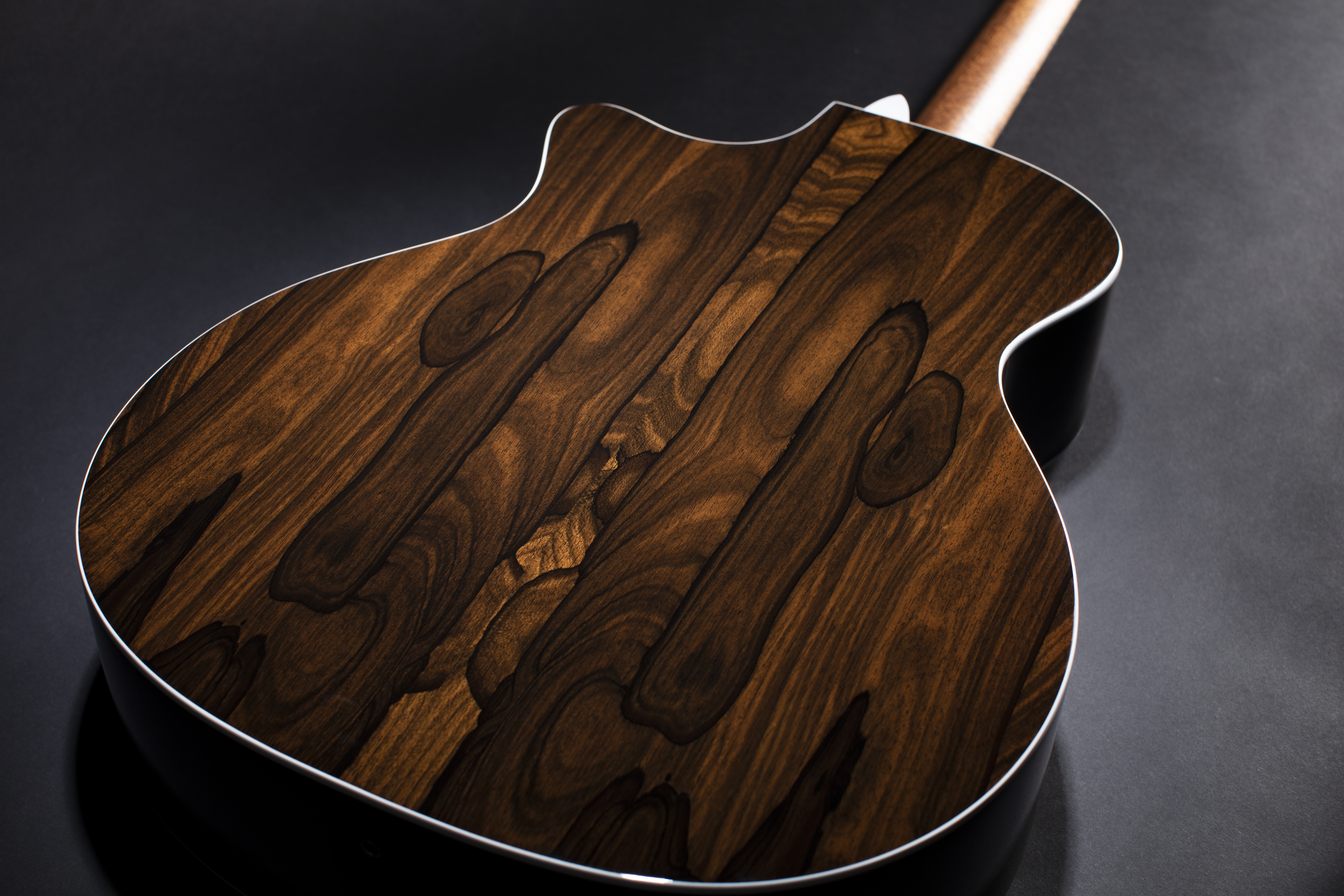
0 Tenor Uke – Sinker Mahogany!
Since 1929, Martin tenor ukes have been prized since they first appeared in 1929. With a 17″ string scale, the tenor uke puts out very nice, resonant volume. The back and sides of this one are made from the old growth Big Leaf mahogany salvaged from a logging river in Belize. This incredibly dense Genuine Mahogany provides rich tone and improved volume to any instrument made from it. A satin finish and old-style Martin logo give it vintage Martin cred. List price: $1,599 with a high-quality soft gig bag.
C1 Uke
Martin crafted this concert-size uke with koa fine veneer that has a hand-rubbed satin finish. Just like the concert ukes made at Martin 1925, it is smaller than a tenor, but larger than a soprano uke. Concert size ukes are known for there balanced tone. List price: $449 with a high-quality soft gig bag.
T1 Uke FSC
Constructed of materials approved by the Forest Stewardship Council, this Tenor ukulele is made with African sapele back and sides and an African sipo neck that has an ebony fingerboard and bridge. All of these beautiful tonewoods are FSC certified as coming from forests managed in a respectful and environmentally sustainable manner. It has Ratio tuners for fast accuracy and comes with a blue gig bag made from recycled plastic water bottles. List price: $459.
Lehigh Valley, PA.— Wednesday, March 23, 2022—C.F. Martin & Co. announced today that Matthew Kennedy has been elected to the company’s Board of Directors.
The nephew of Chris and Diane Martin, Kennedy has been a full-time employee of Martin for nearly a decade and has held a seat on the board of the Martin Guitar Charitable Foundation where he has served with integrity and passion since December 4, 2020.
“Matt will be assuming Diane’s position as a representative of the Martin family, along with me, on the board of our closely held family business,” said Chris Martin. “Matt shares many of the values that made Diane an incredibly kind and beloved human being to everyone who knew her. She and Matt have always shared a fair and just outlook on life and business, carrying on their duties without privilege or ego. I look forward to helping Matt learn about how to guide our precious family business into the future.”
Currently a Project Manager, Kennedy started his journey with Martin on the manufacturing floor and has held various positions throughout the organization. By working alongside coworkers in each area for extended periods, Kennedy was able to understand the unique opportunities and challenges that the employees face on a daily basis. It is through this ongoing immersive experience that he hopes to bring the voice of every employee into the board room.
“I’m truly honored to accept a position on Martin’s Board of Directors,” said Kennedy. “I hope to make my aunt proud by ensuring that her never-ending voice for inclusivity and equality continues to resound with each decision that is made on behalf of the board. I feel a deep sense of responsibility to do what I can to make sure my family’s business and all of my coworkers continue to thrive for the foreseeable future.”
Kennedy holds a BS from Bloomsburg University with a dual major in Computer Science and Philosophy. He is currently pursuing his MBA in Project Management from DeSales University.
I have long been privy to the internal speculation that Mr. Kennedy was being groomed toward possibly being the next family member to head this venerable American family-owned business. Here’s to wishing him every bit of good luck possible.
Spoon’s take on the new Custom Shop Experts program was preceded by his in-depth article on Martin’s revolutionary acoustic-electric hybrid model, the SC-13E, which appeared in vol. 11
Dick Boak and his friend Steve Miller host a benefit concert at the State Theatre in Easton, Pennsylvania will the the site of the event. In the spirit of Dick’s fabulous retirement concert comes a sequel to be savored in the imagination before it arrives, and in the memories it will leave behind for years to come.
Last time, the concert was in celebration of Dick Boak’s retirement from Martin Guitar, where he spent 35 years making it a better place for making better guitars. But a deep freeze left one Marty Stuart snowbound and unable to attend. This time around, Marty Stuart and His Fabulous Superlatives will be headlining, along with other fine heavy hitters.
All tickets are being handled by the State Theatre Box Office. Tickets to State Theatre Members (only) go on sale on Wednesday, December 1st. Tickets to the Public go on sale a week later on Wednesday, December 8th.
If you want to jump on the opportunity, you can become a member of the theatre for $75.00 ($55.00 for Seniors 65 and older). Tickets can be ordered online (depending upon your member or non-member status) at www.statetheatre.org or by calling the Box Office at (610) 252-3132.
Purchasing a membership in the theatre allows you to purchase up to six tickets prior to ticket sales to the public. The maximum number of tickets per purchaser is six. Ticket holders must be fully vaccinated for Covid-19 and show proof of vaccination in order to be admitted into the theatre.
Performer participation is subject to last minute changes.
Charitable Support
Proceeds from Boak Bash Two will equally benefit:
The Musical Instrument Collection of the Moravian Historical Society in Nazareth, PA. Link: www.moravianhistory.org
The State Theatre Center for the Arts, Easton, PA. Link: www.statetheatre.org
Both are 501c3 charitable organizations.
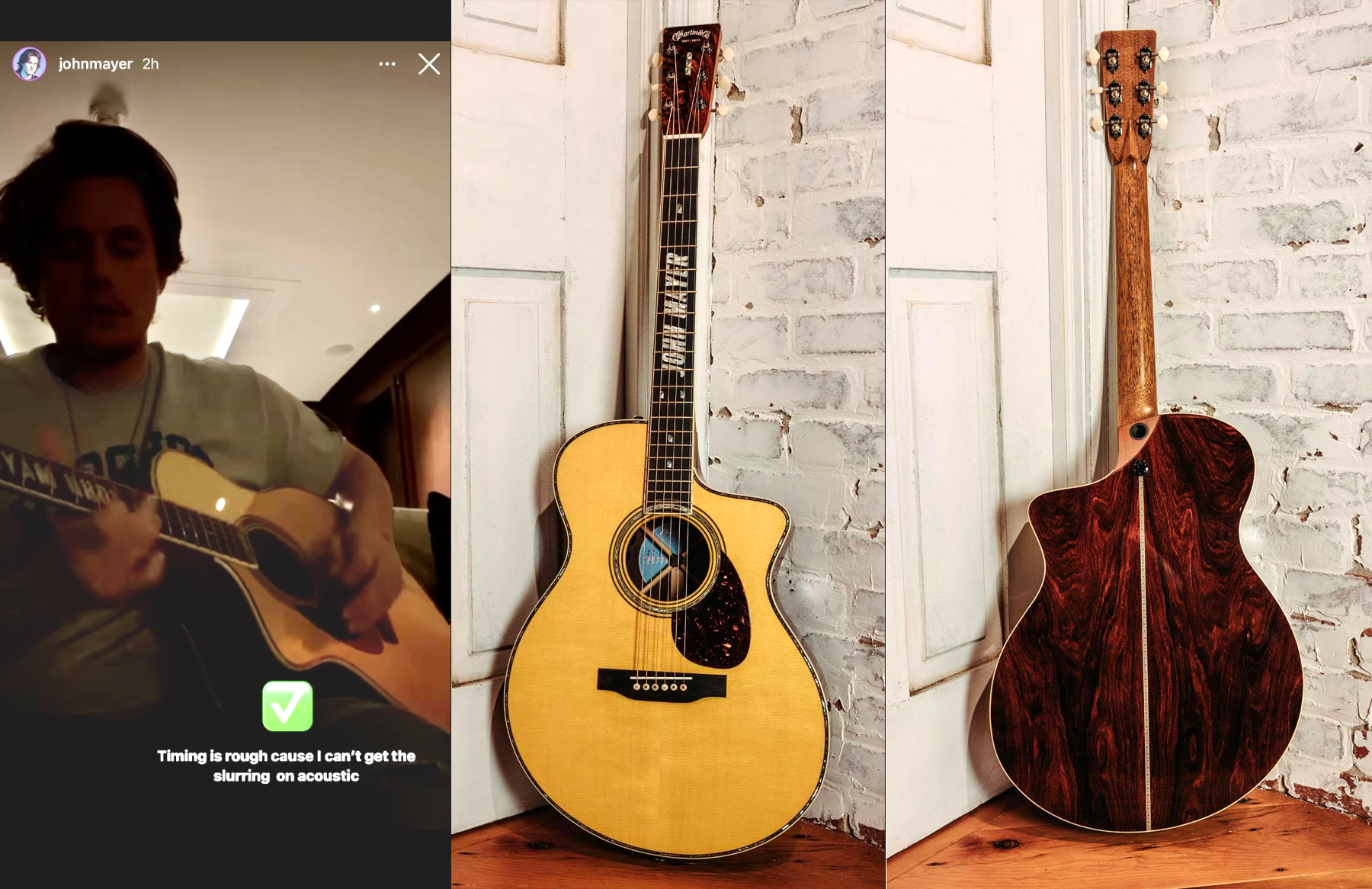
An eagle-eyed Aaron Short sent me the photo on the left to ask about what this guitar might be. And since it is now out there in the public media, my self-imposed gag order regarding any behind the scenes stuff at C. F. Martin & Co. has now some leeway for replying. This is one very cool guitar.
I feel it is important to make clear that this was a private project that Martin had no intention of publicizing. Mr. Mayer had no part in the project or its design, and it was made entirely as a surprise for him, conceived by his friend Fred Greene, Martin’s VP of Product Management.
When Mayer chose to reveal the guitar on his social media, I asked the powers that be if that meant I could post about it. The response I received from Fred was, “Since it’s no longer secret, feel free to share.” And so I shall.
The revolutionary Martin SC-13 is the basis for this one-of-a-kind custom Martin that was made for John Mayer, with the artist’s name inlaid on the fingerboard in abalone shell, using the font from the cover of his latest album, Sob Rock. It also gets a matching abalone rosette around the sound hole, and abalone trim along the edge of the top, making it similar to Style 41 Martins. And that rosette goes all the way through the fingerboard extension on the top, making a full circle. This is a cosmetic embellishment that John Mayer himself came up with for one of his earlier signature models.
The woods are spectacular! The highly-figured cocobolo and shimmering Engelmann spruce look good enough to eat, and even the neck is made from figured mahogany. And the figured cocobolo face plate on the headstock is so outrageous it looks like tortoise shell! There is an inlaid abalone script logo and three split abalone diamonds stacked like rectangles down the center; and all of it is set off by pearloid buttons on the six tuning machines.
The asymmetrical SC design (S body shape named for the bass side curves of the silhouette, C for the treble cutaway) incorporates Martin’s first 13-fret neck with a new neck joint that allows for no heel at all, much like an electric guitar. It is a departure in many ways from the traditional designs of this venerable guitar-making powerhouse. Its proven success is expected to give rise to other SC models in the future – a future put off-course by the COVID-19 crisis. Product projections aside, this SC was produced under the radar, expressly for John Mayer.
(click to enlarge photos – click Back Button to return to article)
The SC-13E is part of the Road Series of acoustic-electric guitars made in Martin’s facility in Navajoa, Mexico, and priced for working musicians. Mayer’s guitar was built in Nazareth, PA with primo tonewoods and appointments. That would mean a much higher commercial price, should anything like it appear for sale to the general public.
Mayer has been a big fan of Engelmann spruce since he was introduced to it by Dick Boak when they were designing his original signature model, the OM-28 JM. That limited edition is now a desirable collector’s item with a skyrocketing price, if you can find one at all. But they made a regular production model based on it, the OMJM, which has the same Engelmann spruce for the top that is matched with the same Indian rosewood back and sides, the rosewood species used on the OM-28V he played for many years prior to the signature models based on it.
Since then, Mayer has had multiple Martin signature models, including two made with cocobolo back and sides, the 00-45 Stage Coach and 00-42 Stage Coach editions. Each is a 12-fret 00 with a slotted headstock. The 45 has an Adirondack spruce top and the 42 has Sitka. Engelmann made a reappearance as the top wood on the D-45 JM, made with Guatemalan rosewood back and sides.
Engelmann spruce has a quick and snappy report, but slower velocity to the swell that rises up and out from sustained chords and harmonic overtones. That effect is barely perceptible when new, but after a year or two the tone of an Engelmann soundboard really blossoms into an ever more-colorful pastel glow that enhances the tonal complexity of whatever rosewood species is used to frame the sound chamber.
Cocobolo is a true rosewood. To my ear, it sounds most like Guatemalan rosewood, with a similar inky-dark undertone, although Guatemalan does not have quite as steely a report from the fundamental notes as cocobolo sends out. The cocobolo should put some meat on the precise Engelmann fundamentals, and the Engelmann should ultimately accentuate the lushness of that deep, dark coco cavern down in the bass and low-mids.
With a body size and sound chamber falling somewhere between a Grand Performance and an Orchestra Model, an SC in this combination of cocobolo topped with Engelmann spruce is mouthwatering in its acoustic potential. But it might provide some challenges when plugging in the onboard Fishman electronics, tonal complexity being a bit of a maverick when it comes to the rodeo of a segmented sound system servicing a large auditorium or concert arena. Fortunately, SCs have an internal switch that cuts the bottom end for just such environments.
I had played an early R&D version of an SC made with solid Indian rosewood and Sitka spruce, and cosmetics similar to Standard Style 28. It was also braced a little heavier. The success of the SC design made with Standard Series woods was apparent from the get go. And it is not telling tales out of school to say the reality of production model SCs made in Nazareth with solid tonewoods that are on par with the Standard Series is (hopefully) only a matter of time. But I would not put money on that happening any time soon.
Since I published this account on September 2, C. F. Martin has saw fit to go public about the guitar on their own social media, with guitar designer Rameen Shayegan posting “I am thrilled to have some glam shots of this custom one-off we built as a surprise gift for John Mayer. I’m ESPECIALLY thrilled that he loves it and is actually playing and enjoying this instrument. Working on projects like this reminds me how much I love my job”
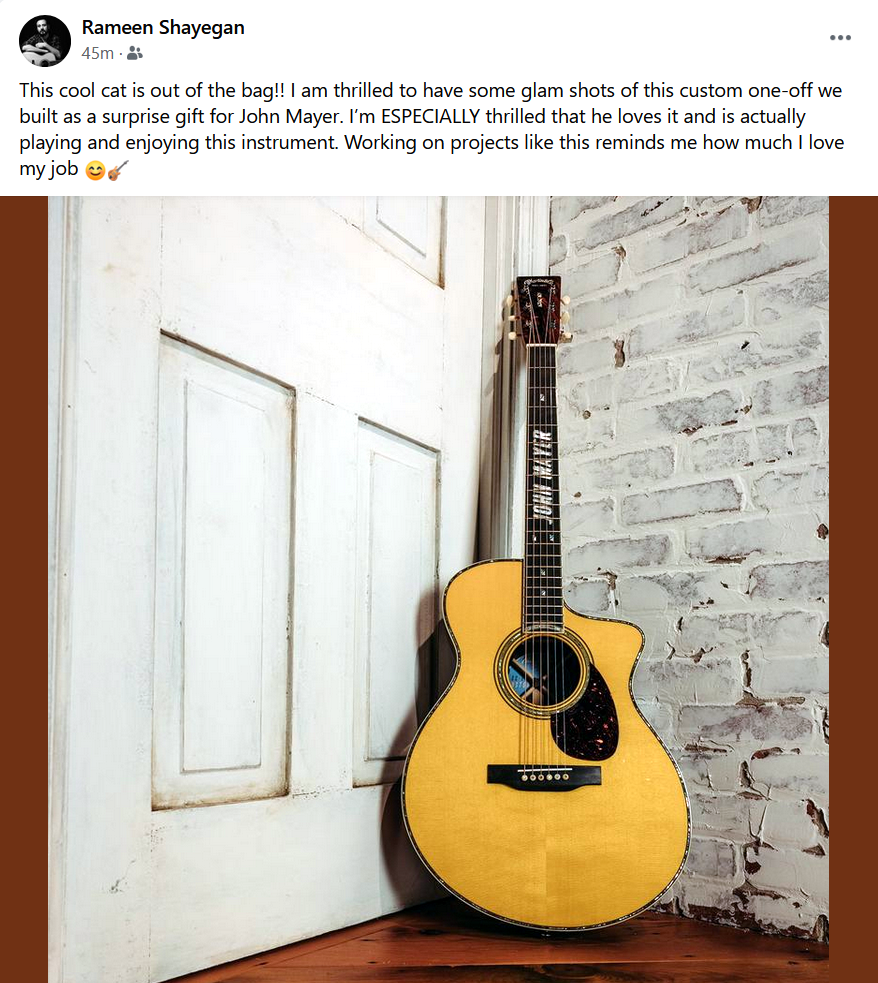
I imposed upon Rameen’s holiday weekend to ask him about the guitar. “Fred (Greene) walked into the Design Team office one day and said he wanted a one-off SC made from Cocobolo and Engelmann spruce. And then he followed up by saying, ‘I want you you guys to pull out all the stops’ and to ‘really pearl it up!’ And that is when he said, ‘Oh, and it is for John Mayer.’ Whew! I went to work on it immediately.”
Cocobolo can be very difficult to work with. It is oily, which makes it problematic where gluing is involved. And some people have serious allergic reactions to the dust when it is sanded. And it can crack when you are working with it.
“We have no bending presses in Nazareth to make the SC body, or bracing masks for that design, or anything really.” What Rameen did have is experience from making the SC prototypes. “I had to bend the sides of John’s new Martin the old fashioned way, by hand, over a primitive form, minimal iron ‘egg.'” This is a device heated by electricity and used to bend guitar sides that are first soaked in water. It was the main way to bend sides at Martin until the turn of the century. “There was no margin for error, but it turned out beautifully.”
Tim Teel, CFM Director of Instrument Design, came up with the fingerboard design. Rameen said that it was tag team effort. “We wanted to base it on Mayer’s Sob Rock album. Did you know Mayer designs his own fonts? That is a pretty cool hobby to have. So, everything about the design, including the split diamond position markers on the fingerboard were inspired by the design concept on his new record. And we included a 360 degree rosette like the one he came up with for his 00-45 SC model.”
I asked about the pickup and was told it is the Fishman Matrix Infinity, which has onboard tone and volume control. Rameen considered using the Fishman’s Goldline Plus pickup that Mayer often uses on stage, so he can fit a feedback buster into the sound hole. “But the SC design is not prone to the same sort of feedback issues one can have with traditional acoustic guitar bodies.”
Tim Teel told me that they built the guitar for Mayer partly because they felt he would be a wonderful adjudicator when it came to a Nazareth-made SC made with solid woods and higher-end construction, and that Tim really enjoyed the design process. By all accounts, “he loves it.” Rameen went on to say that “Mayer is such an important artist whose playing has proven him to be one of the greatest guitarists of all time. That he loves this guitar and enjoys playing it means to me more than I can say.”
In an early conversation, Fred Greene stressed that this guitar was “a one off for John. He is a special person and good friend.”
That being said, there have been many one-off guitars made in Martin’s Custom Shop for notable recording artists that were ultimately used as the basis for an artist signature model, the D-35 David Glamour being the most recent example.
Might this be another Mayer model in the making? I am one man who cannot say.
But I can say, I will be appearing on YouTube’s Aaron Short Music channel on Labor Day (Monday, Sep. 6,) answering questions from the live audience about all things Martin related, via the chat bar feature. The show starts promptly 4 PM, Eastern Time, and will remain up for replay viewing on Aaron’s YouTube channel. I have no doubt this guitar will come up as one of the topics for discussion.
Here is the video Mayer posted on his Instagram story outlet, picked up by a Celine Dion fanzine.
.
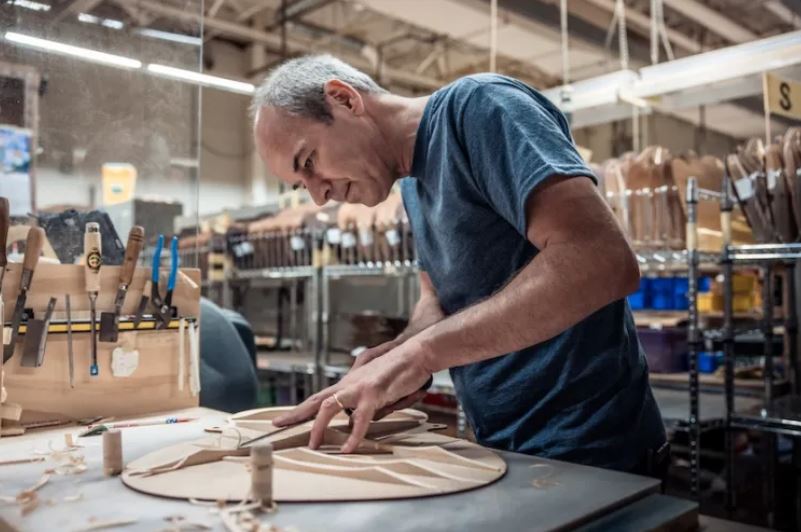 New CEO Thomas Ripsam scalloping braces at the Martin factory
New CEO Thomas Ripsam scalloping braces at the Martin factory
At long last, I have finally completed my guide to the bracing patterns used at C. F. Martin & Co., at least in the summer of 2021. Who knows when things will change where this rather fluid subject is concerned? “Not I,” said the old gray fox.
The bracing inside an acoustic guitar can have considerable influence on tone. Martin guitars come with a variety of bracing patterns that are by no means created equal.
Several years ago, Martin simplified the public spec sheets of their entire catalog of guitars and ukuleles, removing pertinent information relating to bracing and effectively blurring the details that separate the guitars from different pricing tiers. While this put them in line with other manufacturers like Gibson, it was a major departure for Martin, to take away the means for consumers to get a good understanding of what any given Martin model actually has under the hood, as it were.
The Martin website has only gotten worse in this regard. Several of their spec sheets contain out of date information, or information that even has people at Martin scratching their heads as to who came up with some of the specs listed, which have no basis in reality. And they have no idea why the powers that be do nothing to correct such misinformation.
Even the accurate information can be of little use. While Martin is understandably proud of having invented the X-bracing that has been copied by every steel string guitarmaker on earth, it is meaningless to someone looking at the spec sheet of a Martin guitar to see “Bracing Pattern: X Bracing,” when every Martin guitar made today has an X brace.
Likewise, the majority of Martin guitar spec sheets include “Brace Shape: Scalloped.” This is somewhat misleading (intentionally or not) when some bracing patterns have lots of scalloping involved but others have next to none.
Someone unfamiliar with the technical specifications of Martin guitars could easily assume the HD-35 and the D-10E have very similar construction and bracing. They don’t. But there has not been any public source to turn to where the straight dope is concerned, when it comes to straight braces vs. scalloped braced, and all related topics. Recently, Maury’s Music published a blog post about bracing that is quite helpful. But Martin as a company has been anything but helpful, publicly.
Moreover, there have been considerable changes to various bracing patterns used on Martins today since the last time there has been any real effort to explain such things to consumers. Some of this was news to me when I started probing and prodding the appropriate people about the current state of bracing across the Martin line. So, I have been guilty of imparting out-of-date information during recent interviews or when answering readers’ mail.
So, in the spirit of doing my part to combat the pandemic of misinformation swirling around the internet, I present to you my 2021 Guide to Martin Guitar Bracing, with special thanks to Tim Teel, Director of Instrument Design; Rameen Shayegan, Manager of International Instrument Design; and Michael Dickinson of Wood Procurement and other considerable expertise.
“Where does the 16 Series fit in? I have a 1989 D-16M that is indistinguishable in every way, including spec wise, from a traditional D-18.” — Aden in South Africa
Spoon replies:
Congratulations on your D-16M. It is one of the lesser-known but wonderful Martin models. So too are the 000-16 and 000C-16 from the same era.
But the D-16M at that time was anything but exactly like a traditional D-18, of that era anyway. It is closer to the D-18V from the Vintage Series, minus the V neck.
The D-18 in those days had a black pickguard and black binding, and white domino dots for fret position markers – and non-scalloped bracing. The 1989 D-16M had the tortoise trim and pickguard, Style 17 dots – and scalloped braces with a smaller maple bridge plate, at a time when most Martins did not get those very excellent construction features.
The D-16M also had the Low Profile neck shape years before the standard D-18 got it. But 1989 might have been the first year of that neck shape moving to the D-18. They had been making the D-18P (P for the new neck profile) for three years by that time and 1989 is the first year they did not. But they did make the D-28P, HD-28P and D-35P that year, so the official change from the Full Thickness profile to the Low Profile on what we now call Standard Series instruments may have taken place in 1990.
What makes them desirable to me is the scalloped bracing at a time when the D-18 had non-scalloped bracing. The same goes for the 000-16 and 000C-16. Not only that, the 000s have 1/4″ scalloped bracing, and they have a long-scale neck. So they are really more like an OM-18 than the 000-18 of the day, except for the 1-11/16″ nut width. And the version with the oval cutaway has a 22 fret neck! Clearly meant for electric guitarists. Mine is from 1991.
But Style 16 was always changing. Some 1980s 16s were made with black binding, others have tortoise; with satin finish or with full gloss; with vintage toner on the top or not; and some were made with the light stain normally used for maple guitars.
When Style 16 first appeared in 1961, it was limited to 12-fret guitars in size 0 that were lightly built to be used with nylon or extra light steel strings, and given the suffix NY in homage to the Martins from the 1800s that were sold with a label reading New York, NY, because that was where Martin’s lone distributor did business. A 00-21NY was made at the same time. In 1962 a size 5 guitar was offered in Style 16 as well.
When Style 16 returned in the mid-1980s as a collection of 14-fret guitars, it was sort of the mahogany version of Style 21 vis-a-vis Style 28. It got slightly lower-grade wood than the 18 (even if the woods are better than what you see on an 18 today.) And they had smaller dots previously used on Style 17 instruments in the 1950s, as well as no inlay around the top or back.
But otherwise, they have the full dovetail neck joint and solid American mahogany neck block, and with all the same construction of what we now call the Standard Series, which make them ridiculously great guitars to have now, after seasoning all those years. This is especially true for mahogany lovers, since there were no mahogany Martins made with scalloped bracing at that time. And of course, it is all tropical American Big Leaf mahogany, not the stuff from Africa used on the 16 Series today.
The 16s did not appear in the Martin catalog at first. They were built for export and sold mainly in Canada. But they were also sold as NAMM Show Specials for American dealers who made the effort to attend the trade shows. They proved so popular that they were eventually added to the official price lists.
They made 660 D-16M guitars in 1989. (A total of 2,120 were made in years 1986, 1987, 1989, and 1990.) They also made the D-16A (ash back and sides, 818 total, 1987, 1988, 1990) D-16W (walnut, 100 total, 1987) and D-16K (koa, 390 total in 1986.)
D-16A with ash back and sides
In addition, the D-16 was replaced by the D-16H which had slightly different trim each year (1,692 made between 1991 -1994.) But all have had a herringbone back strip and rosette, like Vintage Style 21. Those features would eventually become the hallmarks of Style 16 of the 1990s and the modern 16 Series instruments that followed.
Although production numbers for the 000-16 and 000C-16 (the M was not always included in the stamp) were not much less than the D models, the non-cutaway 000-16M is far more rare on the used market. I guess that speaks to how much their owners love them.
When they do show up for sale they are still priced between $1K – 1.5K. The Ds go for around the same amount. These are ridiculously good bargains for such excellent guitars.
The chief reason these gems are undervalued is because in late 1995 a certain bean counter did away with these great guitars and replaced them with the Mortise and Tenon neck joint version that had the A-Frame bracing necessary for that design. The change was all about maximizing profits on a relatively more-affordable Martin guitar. Many people assume the 16s always were that way.
For those in the know, the 16s made from 1986 until the switch sometime in 1995 are awesome and ahead of their time when it came to styling and scalloped bracing. There are various time periods when Martin was trying things out on their way to codifying this or that, and sometimes they accidentally invented an excellent if short-lived model. The D-16 built between 1986 to 1994 is definitely one of them, no matter which exact version it is.
In my opinion, today’s 16 Series guitars are greatly improved from the ones made in the late 1990s and early 2000s, and are aimed at electrified performance. They all have built-in pickup systems and the larger bodies have the reduced depth of a 000 for anti-feedback purposes. They are immensely popular with good reason. But I always tell people that if they find a pre-1995 16 in good shape, buy it!
And that is one man’s word on…